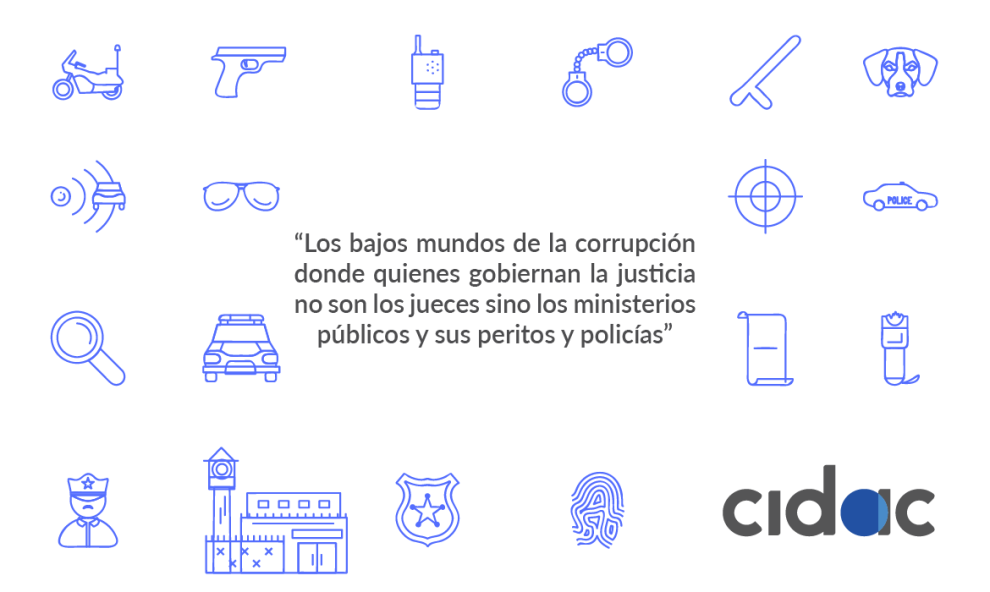“Transitions are long, uncertain and complex, affirms Joaquín Villalobos. Worse yet, writes Australian novelist Nikki Rowe, “Transition isn’t pretty, but stagnation is hideous”. Mexico’s penal reform process is found in that limbo: significant advances in some aspects but without consolidating the port of arrival.
The country undertook an extraordinarily ambitious transformation in matters of criminal justice but did not devote itself to creating the conditions for it to fructify. As in so many other things, we crossed the river without a map to guide our arrival on the opposite shore. However, according to legislation approved years ago, at least in the interpretation by the Supreme Court, the principles of the new system would enter into operation immediately, impacting the imperfect legacies of the past. With this, the risks of an unfinished transition could become incommensurable.
The main concern with regard to implementation of the reform is reduced to the application of due process. Since Florence Cassez (a French woman accused of kidnapping) was released under the principle that her rights had been violated when the judiciary failed to follow the procedures established by the law, a great number of abductors, pederasts, and murderers have been freed. The ruling of the Supreme Court in this matter established the principle of due process of law and this has been used by innumerable attorneys to obtain their clients’ freedom, despite the fact that the majority of these had recognized their culpability. The new system will drastically accelerate this process of liberation.
Dispute in this regard was not long in coming about. The victims (and their families) of abduction, homicide, extortion and all types of crimes argue that it is not possible to apply a principle retroactively and that, in any case, the new system should be applied to future transgressions and not to those of the past. One of the most articulate plaintiffs, and the mother of a young man who was kidnapped and murdered, Isabel Miranda de Wallace, wrote that “Due process must be integral, that is, all parties must be similarly armed… Diverse voices are raised in favor of the rights of the accused, but I ask you, who looks after the victims? Who defends the human rights of those who were first violated by the criminals when these victims were tortured or mutilated?”
What Mrs. Wallace proposes is morally indisputable and casts light upon what the country is faced with in this matter. The question is how to carry out the transition that the country requires from the ashes of the old corrupt and authoritarian political system, but nonetheless the one that continues being the norm, to the construction of a new platform of civilization, democracy and justice for all. Given the corruption, dysfunctionality and, therefore, impunity that characterizes the justice procurement system, the virulence of those who have endured agony from crime is perfectly explainable and understandable. As is the logic that the citizens –from the most modest to the most prominent- would prefer to see a presumed criminal in jail –or to lynch him- than to trust in the promises inherent in due process. As the saying goes, the mule was not born stubborn; circumstances made it that way…
The point of departure in criminal affairs are the underworlds of corruption where those who govern justice are not the judges but rather the prosecutors -and their investigators and police-, who are lacking in the professionalism, forensic and other laboratories, capacities and incentives to conduct professional and legally irrefutable investigations. The emphasis of the system is not found on the procurement of justice but instead on the processing of those whom the prosecutors determine to be guilty; the process is so vice-ridden that it inevitably entails violations of the rights and procedures that comprise the essence of due process. A lawyer whom I consulted could not have been more eloquent: “Due process is a gift on a golden platter for defense lawyers because there is no way for present-day justice systems to do good work; it is always possible to find flaws in the process”.
It is clear that only a faultless transformation of the justice system would make it possible, on touching shore at the opposite side of the river, for Mexicans to have open and transparent processes, professional prosecutors and judges in charge of the process. As in a civilized nation. The problem is how to get there.
The furor being generated by the release of individuals accused of homicide and abduction obliges the politicians to respond. The transition inherent to the reform should have started in 2008 but, Mexican style, it never did. The question now is what to do now: put the reform on ice, thus preserving the present (in)justice system, as many propose, or create a mechanism sanctioned by the Supreme Court that separates the old system from the new, with which novel incentives would be created for the prompt implementation of the new system. That is to say, not superimposing the new on the old, but creating a parallel transition process.
What is responsible is not to step back for even an instant from the basic issue-at-hand: getting to the other side of the river, to the sanctuary of professional and unpolluted justice.
@lrubiof




Comments